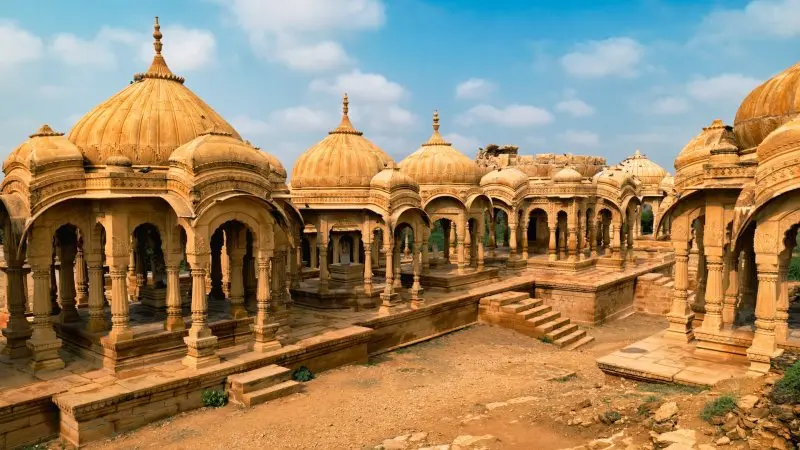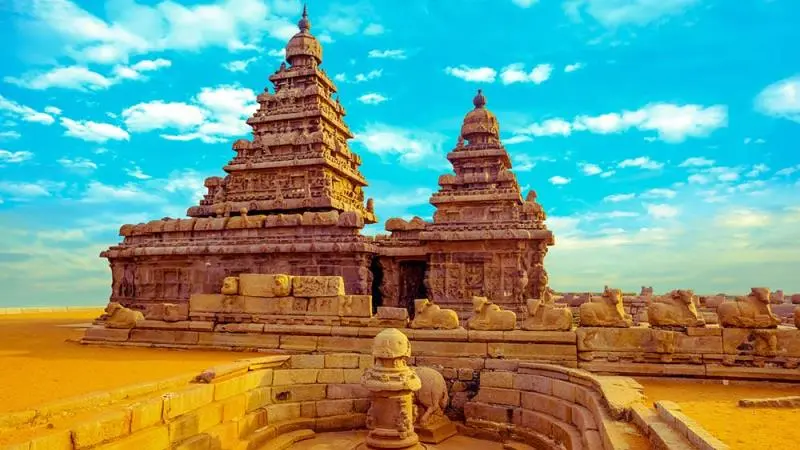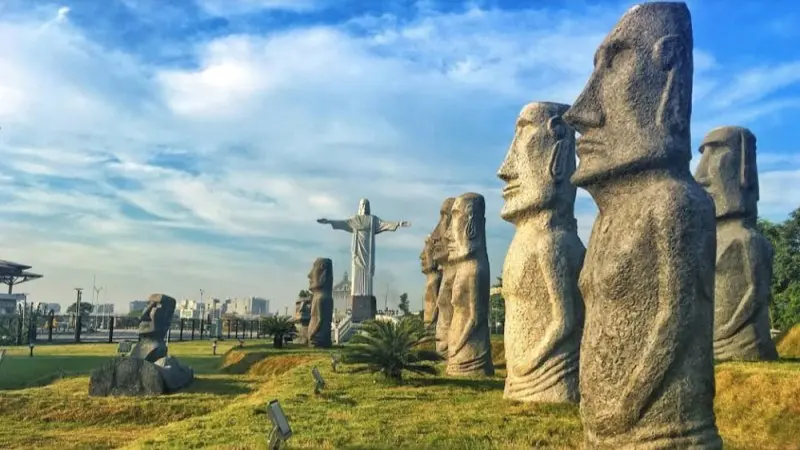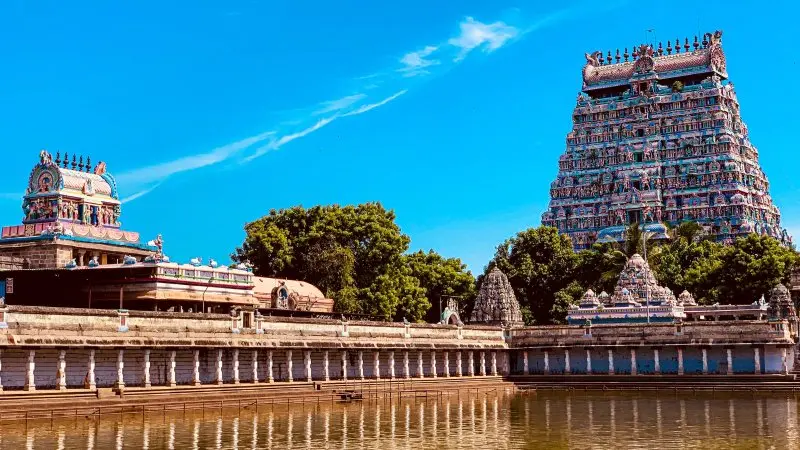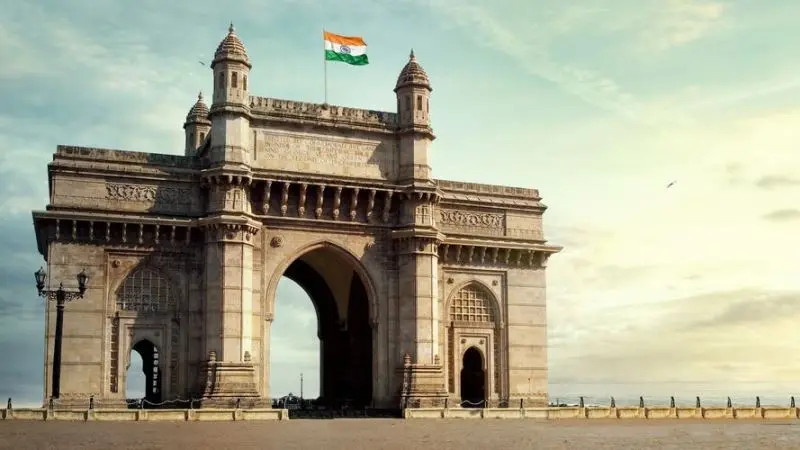| Entry Fee: Free; Location: Check Map Address: Jaisalmer, Rajasthan, India. |
Jaisalmer, located in the heart of the Thar Desert in the western Indian state of Rajasthan, holds a significant place in Indian history and culture. Its strategic position on the ancient Silk Road connected it to important trade routes, fostering a vibrant mix of cultural and commercial exchanges.
Known as the “Golden City,” Jaisalmer earns its nickname from the yellow sandstone used in the architecture of the city, which gleams gold under the sun. This golden hue sets the city apart, making it an emblematic part of Rajasthan’s rich historical landscape. The majestic Jaisalmer Fort, one of the largest fully preserved fortified cities in the world, stands as a crown atop the city, adding to its golden appeal. This unique blend of natural beauty, rich history, and architectural splendor positions Jaisalmer as a must-visit destination in India.
1. History of Jaisalmer
1. Founding and Early History
Jaisalmer was founded in 1156 AD by the Bhatti Rajput ruler Maharawal Jaisal Singh, after whom the city is named. According to folklore, he chose the location for his new capital on the advice of a local hermit named Eesul. The city prospered due to its location along the camel trade routes between India and Central Asia.
2. The Medieval Era and the Role of Rajput Rulers
During the medieval period, the city became a thriving trade center. The Rajput rulers of Jaisalmer were known for their martial spirit, often engaging in battles and alliances with the rulers of Delhi, Agra, and other Rajput states. Despite numerous invasions, the city’s strategic location and the rulers’ alliances helped it maintain its independence.
3. Modern History and the Integration with the Indian Union
In 1818, Jaisalmer came under the protection of the British Raj, as the rulers signed a treaty to accept British suzerainty. This period saw relative peace and the city’s economy flourished with trade and crafts. After India gained independence in 1947, Jaisalmer, like other princely states, integrated into the newly formed nation.
4. Historic Events and Their Impact on the City
Despite periods of relative obscurity, especially after the partition of India and closure of the silk route, Jaisalmer has managed to transform and reinvent itself. Today, the city stands as a testament to its resilient past, with its history intricately carved into the sandstone walls of its architecture. Its past has not only shaped its cultural and architectural identity but also given it a unique place in the tourism landscape of India.
2. Jaisalmer Fort
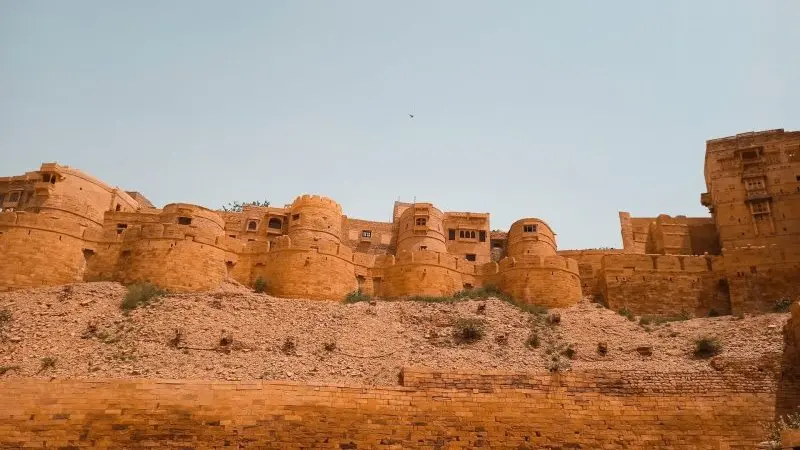
1. Historical Significance and Foundation
Jaisalmer Fort, also known as the Sonar Quila or Golden Fort, holds a central place in the city’s history and identity. Built in 1156 AD by the Bhatti Rajput ruler Rawal Jaisal, the fort was once a refuge for the entire population of Jaisalmer during times of siege.
2. Unique Architecture and Material – Yellow Sandstone
Constructed using yellow sandstone, the fort gleams golden in the sunlight, earning it the moniker “Sonar Quila” or “Golden Fort.” The architecture is a marvelous blend of Rajput and Islamic styles, with elaborate stone carvings adorning the fort. The fort walls, which stand 30 feet high, are flanked by 99 bastions, providing a formidable defense against any invasions.
3. Notable Structures Within the Fort
Inside the fort, visitors can explore a city in its own right. There are numerous palaces, havelis (large houses built by wealthy merchants), and Jain temples, each more intricate than the last. The Maharawal’s palace, also known as the Raj Mahal, offers stunning views of the city below.
The Jain temples within the fort, dating back to the 12th and 15th centuries, are renowned for their intricate design and detailed stonework. They are dedicated to various Jain Tirthankaras (sages), and their sandstone walls and ceilings are filled with delicate carvings.
The fort also houses several shops, hotels, and residences, making it one of the few “living forts” in the world, with about a quarter of the old city’s population still residing within its walls.
4. Preservation and Tourism
Recognizing its historical and architectural value, the Jaisalmer Fort was declared a UNESCO World Heritage Site in 2013 as part of the group of Hill Forts of Rajasthan. Despite concerns about overcrowding and structural stability, the fort continues to attract tourists from around the world, drawn by its rich history and architectural grandeur.
3. Culture and Tradition
1. Overview of Rajasthani Culture and its Influence on Jaisalmer
Jaisalmer, like the rest of Rajasthan, is known for its vibrant culture and rich traditions. Its colorful festivals, lively music and dance, exquisite arts and crafts, and delectable cuisine embody the spirit of the Rajasthani people. The city’s historical connections with trade routes have also led to a confluence of different cultures, further enriching its cultural tapestry.
2. Local Arts: Music, Dance, and Craft
The folk music and dance of Jaisalmer are renowned, with performances often held against the backdrop of the city’s stunning architecture. Traditional dance forms like Ghoomar and Kalbeliya, and folk music styles like Maand are integral to the city’s cultural celebrations.
Jaisalmer is also famous for its traditional crafts, especially carving on wood and stone, and embroidery work. The city’s artisans are skilled in making puppets, jootis (traditional leather footwear), and bags with intricate designs.
3. Traditional Clothing and Cuisine
The traditional attire of the locals is vibrant, reflecting the bright and joyful spirit of the people against the stark desert landscape. Men typically wear dhotis, kurta, and colorful turbans, while women dress in ghagras (long skirts) with heavy jewelry.
Rajasthani cuisine, known for its unique flavors and variety, is a significant part of Jaisalmer’s culture. From the spicy Dal Baati Churma and Gatte ki Sabzi to the sweet Ghewar and Ghevar, the food here is as diverse and vibrant as its culture.
4. Popular Festivals: Desert Festival, Gangaur Festival, etc.
Jaisalmer hosts numerous festivals throughout the year. The Desert Festival, held in February, is a three-day extravaganza showcasing the cultural richness of Rajasthan. From camel races to folk dance performances, the festival is a major tourist attraction.
Another significant festival is Gangaur, celebrated by the women of Rajasthan. It involves worshipping Gauri, the consort of Lord Shiva, to seek marital bliss. The festival is marked by processions, traditional music and dance, and feasts.
4. Tourism in Jaisalmer
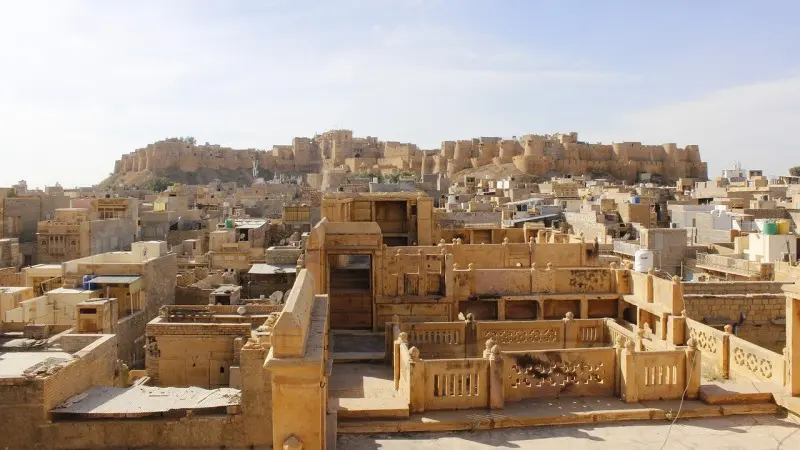
1. Importance of Tourism to Jaisalmer’s Economy
Tourism is a major contributor to Jaisalmer’s economy, with visitors from around the world drawn to its rich history, unique architecture, and vibrant culture. The city’s well-preserved historical sites and natural beauty make it a must-visit destination in Rajasthan.
2. Popular Tourist Attractions
Jaisalmer offers a variety of attractions for tourists. Patwon Ki Haveli, a collection of five havelis, showcases intricate architecture and carvings, providing a glimpse into the opulent lifestyle of the city’s past merchants.
Sam Sand Dunes, located on the outskirts of the city, offers a quintessential desert experience with camel rides, cultural performances, and stunning sunsets.
Gadisar Lake, an artificial reservoir, is a serene spot known for its arched gateways, temples, and migratory birds.
3. Camel Safari and Desert Camping Experiences
One of the most unique experiences in Jaisalmer is a camel safari through the Thar Desert. These safaris often include watching the sunset or sunrise over the dunes, a truly mesmerizing sight. Many operators also offer overnight desert camping experiences, complete with traditional Rajasthani meals and cultural performances under the starlit sky.
4. Responsible Tourism and Conservation Efforts
As tourism continues to grow, there are increasing efforts towards sustainable and responsible tourism. This includes conserving water resources, maintaining the structural integrity of historical sites, and ensuring the well-being of the local community. These efforts aim to preserve Jaisalmer’s natural and cultural heritage while providing meaningful experiences for tourists.
Conclusion
Jaisalmer, with its unique blend of history, culture, and geography, offers an immersive experience into the heart of Rajasthan. Its majestic fort, enchanting havelis, vibrant festivals, and captivating desert landscape tell a story of resilience, tradition, and cultural diversity. Each element of the city, from the golden hue of its architecture to the rhythmic beats of its folk music, narrates a tale that is unique to Jaisalmer.
In the broader context of Indian heritage and tourism, Jaisalmer plays a vital role as a repository of ancient history, architectural marvel, and cultural vibrancy. It serves as a living testament to the grandeur of the Rajput era and the enduring traditions of Rajasthan. As a destination, it continues to charm visitors with its blend of old-world charm and natural beauty, making it a jewel in India’s tourism landscape.
In conclusion, Jaisalmer is more than just a city; it is an experience that unfolds like a beautifully written ballad of time – one that beckons travelers to partake in its rich tapestry of history, culture, and natural beauty. From the golden fort standing majestically over the city to the rhythmic undulations of the Thar Desert, every aspect of Jaisalmer invites exploration and appreciation.

